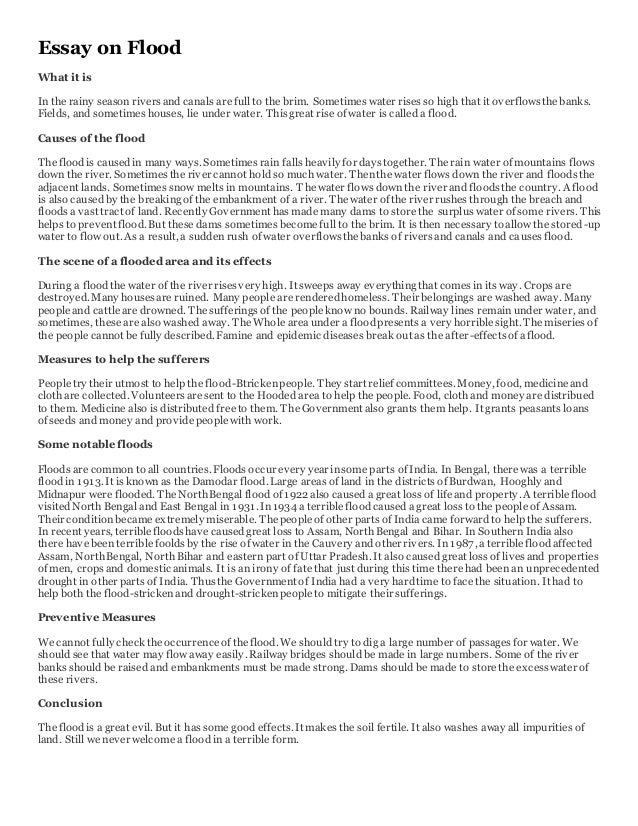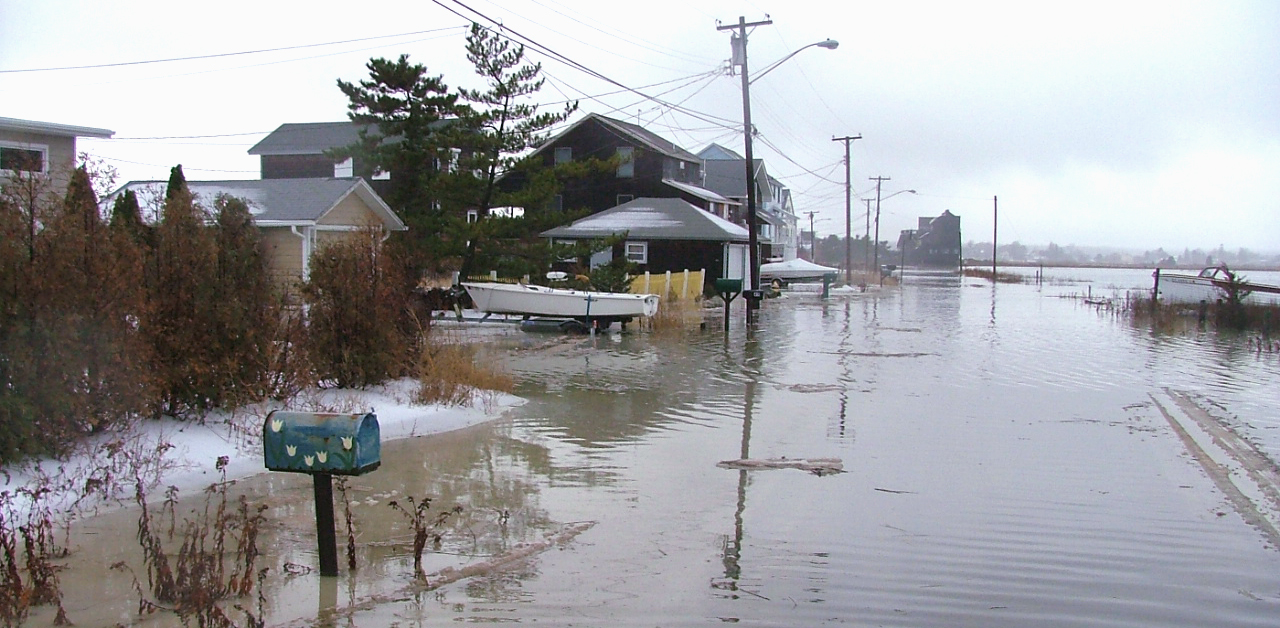
16 rows · The majority of papers that the authors reviewed consider population samples of adults who are disasters. This thesis presents a framework and research approach to provide a means to reducing physical and economic damages associated with natural disasters. A case study is presented illustrating the devastation that would be caused by , and year flood events in In this paper, we illustrate the restoration potential of floodplains along the Danube and its major tributaries. Via two case studies in the Upper and Lower Danube, we demonstrate the effects of restoration measures on the river ecosystem, addressing different drivers, pressures, and opportunities in
PLOS Currents Disasters
Flash floods are a worldwide hazard, and are the number one hazardous weather related killer in the United States.
They occur when heavy rainfall in a short period of time causes water to rapidly rise. NSSL researchers include hydrologists and hydrometeorologists to address the complicated problem of forecasting and warning for these events, research papers on floods. NSSL researchers investigate the meteorological causes of flash flooding and develop tools to improve the science research papers on floods forecasting behind heavy rainfall and flash flooding. Following the success of the CRAFT—Collaborative Radar Acquisition Field Test—project, NSSL developed and implemented a real-time Multi-Radar Multi-Sensor system inintegrating data from multiple radar networks, surface and upper air observations, lightning detection systems, satellite and numerical weather prediction models.
The data is used to estimate and forecast precipitation locations, amounts, and types. MRMS was transitioned into National Weather Service operations at the National Center for Environmental Prediction in and provides severe weather and precipitation products for improved decision-making capability within NOAA.
The operational MRMS QPE products have high resolution and rapid-updating capabilities. The products are also used for verification of satellite rain products and for verification of quantitative rain forecasts from numerical weather prediction models.
MRMS serves as a powerful tool for the creation and evaluation of new techniques, strategies and applications to improve QPE. As new concepts are developed, research papers on floods, they can be tested within the research papers on floods MRMS environment in the cloud, research papers on floods.
This process facilitates a rapid science-to-operations transition of new MRMS applications and products for flood and flash flood predictions and water resources management. The FLASH project was launched in early largely in response to the demonstration and real-time availability of high-resolution, research papers on floods, accurate rainfall rate estimates from the Multi-Radar Multi-Sensor project.
FLASH introduces a new paradigm in flash flood prediction, using MRMS and producing flash flood forecasts with products generated as frequently as every 2 minutes. FLASH represents the first continental-scale flash flood forecast system in the world, with hydrologic model forecasts being run every 10 minutes, research papers on floods.
FLASH has almost 11 million grid points across the country improving its forecast. The primary goal of FLASH is to improve accuracy, timing, specificity, and severity levels of flash flood warnings in the U. The FLASH team is comprised of researchers and students who use an interdisciplinary and collaborative approach to achieve the goal.
The FLASH system was transitioned to the National Weather Service in November The MRMS Hydrometeorological Testbed Experiment HMT-Hydro is an ongoing summer experiment that began in The in-house experiment provides an opportunity to test out new approaches in flash flood forecasting. For a period of approximately 4 weeks, several National Weather Service forecasters participate during the week by using the experimental products in a real-time setting.
They issue experimental flash flood watches and warnings throughout the day, and the research team and the forecasters subjectively evaluate the products the following day. The HMT-Hydro experiment has been successful in garnering essential feedbacks from eventual end-users, thus enabling the researchers to refine and optimize the products.
The experiment also provides a rich environment for collaborations and forecaster training, research papers on floods. During the MRMS Hydrometeorological Testbed Experiment, researchers are investigating ways to increase flash flood lead times using ensemble rain forecasts from the Warn-on-Forecast system as inputs to FLASH. Another major paradigm change is being explored. Through the use of ensemble precipitation forecasts, researchers are also advancing the FLASH system forecasts from being deterministic to fully probabilistic.
The ANCHOR project leverages remote-sensing solutions for unique hydrometeorological observations. The first component has developed an in-house prototype of a low-power, lightweight, low-cost, research papers on floods, scanning LiDAR, research papers on floods, which utilizes light rays and remote sensing to measure distance to objects.
The second component is a NOAA-funded project that deployed 14 stream radars across the U. These sensors report river stage and velocity in real-time. The project represents a change in paradigm in that the sensors are not in contact with the stream, which improves safety and also enables real-time estimates of hydrologic variables without the need for costly measurements in the stream. The system can be readily deployed in a few hours; power is research papers on floods by a small battery charged by a solar panel; the unit can be hung from a bridge or by cables; data are transmitted research papers on floods by cellular research papers on floods. All of these emerging technologies use remote sensing to advance the state of knowledge in hydrology.
In order to evaluate forecasting tools, NSSL needs observations of flash flooding. NSSL maintains research papers on floods database of flash flood observations from the U. This database has been used ubiquitously for community research purposes. NSSL scientists operated NOAA NSSL's mobile X-band dual-polarized radar, NOXP, in Colorado to collect data and analyze storm characteristics in the Gunnison river basin.
The National Weather Service radar servicing the Gunnison area is located in Grand Junction, Colorado, at 9, feet, with 12,foot mountain peaks causing radar beam blockage at lower elevations to the southeast around the Gunnison area. The high-resolution data sets will provide insight into the variations of storm characteristics for different terrain profiles. The success of these mobile radar deployments ultimately led to the state funding of a permanent radar installation in Alamosa.
NSSL collaborates with other countries to improve flood and flash flood warnings. Since floods and flash floods kill more people in the U. each year than any other weather-related event, this relationship benefits U.
efforts as well. Working together to develop better forecasting tools will save lives and property worldwide. NSSL's work with Taiwan's Central Weather Bureau and Water Resources Agency, along with NOAA's Earth System Research Laboratory has resulted in the development research papers on floods high-resolution QPE and the QPF — HRQ2 — system for Taiwan. The collaboration has been ongoing sincewith the goal of improving Taiwan's capabilities to issue flash flood and flood warnings and to improve river and reservoir water management.
The HRQ2 system has been running in real-time at the CWB and more than ten other research papers on floods agencies. The system continues to undergo development and enhancement. Coastal and Inland Flooding Observation and Warning CI-FLOW is a collaborative prototype real-time system that predicts total water level in North Carolina. CI-FLOW captures the complex interaction between rainfall, river flows, waves, tides, and storm surge, and how they will impact ocean and water levels, research papers on floods.
CI-FLOW is being tested in real-time when coastal storms approach North Carolina. NOAA NWS forecasters have access to CI-FLOW during these events to provide feedback on how well research papers on floods CI-FLOW system estimates total water level. NSSL, with support from the NOAA National Sea Grant leads the unique interdisciplinary team of federal, state, university and private partners.
Areas damaged by wildfires are known as burn scars and are particularly susceptible to flash floods and debris flows during rainstorms. Rainfall that is normally absorbed by vegetation can run off almost instantly, causing creeks and drainage areas to flood much earlier and with higher magnitude than normal.
NSSL supplied real-time close-up radar mobile radar data during rain events in southern California where the local NWS radar beam is blocked by the terrain. Home Research at NSSL Flooding NSSL Research: Flooding Flash floods are a worldwide hazard, and are the number one hazardous weather related killer in the United States.
Flooding Research Areas NSSL researchers investigate the meteorological causes of flash flooding and develop tools to improve the science and forecasting behind heavy rainfall and flash flooding.
Quantitative Precipitation Estimation QPE : Multi-Radar Multi-Sensor MRMS Following the success of the CRAFT—Collaborative Radar Acquisition Field Test—project, NSSL developed and implemented a real-time Multi-Radar Multi-Sensor system inintegrating data from multiple radar networks, surface and upper air observations, lightning detection systems, satellite and numerical weather prediction models.
Flash flood modeling: Flooded Locations and Simulated Hydrographs FLASH project The FLASH project was launched in early largely in response to the demonstration and real-time availability of high-resolution, accurate rainfall rate estimates from the Multi-Radar Multi-Sensor project. Multi-Radar Multi-Sensor Hydromet Testbed Experiment The MRMS Hydrometeorological Testbed Experiment HMT-Hydro is an ongoing summer experiment that began in Hydrologic Warn-On-Forecast During the MRMS Hydrometeorological Testbed Experiment, researchers are investigating ways to increase flash flood lead times using ensemble rain forecasts from the Warn-on-Forecast system as inputs to FLASH.
Observing flash floods in new ways: Automated Non-Contact Hydrologic Observations in Rivers ANCHOR The ANCHOR project leverages remote-sensing solutions for unique hydrometeorological observations. Flash Flood Observation Database In order to evaluate forecasting tools, NSSL needs observations of flash flooding. This database has been used ubiquitously for community research purposes Southwest Colorado Radar Project NSSL scientists operated NOAA NSSL's mobile X-band dual-polarized radar, NOXP, research papers on floods, in Colorado to collect data and analyze storm characteristics in the Gunnison river basin.
International Projects NSSL collaborates with other countries to improve flood and flash flood warnings. Past Flooding research Total Water Level Prediction Coastal and Inland Flooding Observation and Warning CI-FLOW is a collaborative prototype real-time system that predicts total water level in North Carolina. Debris Flows Areas damaged by wildfires are known as burn scars and are particularly susceptible to flash floods and debris flows during rainstorms.
Floods: Last Week Tonight with John Oliver (HBO)
, time: 19:29Floods Essays: Examples, Topics, Titles, & Outlines

Aug 06, · Floods are natural disasters that occur due to a rise in the water levels that submerge, disrupt normal human activities and operations (Schneid, ). It is important to note that floods are a natural disaster and that their severity is determined by the water levels and the force and content. Geodesign barriers This chapter briefly reviews the flood problem in the United States and the policy issues affecting the problem. It then describes flood-producing conditions and the several measures used to mitigate floods. It concludes with the background and design of the flood research study and the dimensions of this final report. The Flood ProblemFile Size: 1MB disasters. This thesis presents a framework and research approach to provide a means to reducing physical and economic damages associated with natural disasters. A case study is presented illustrating the devastation that would be caused by , and year flood events in
No comments:
Post a Comment